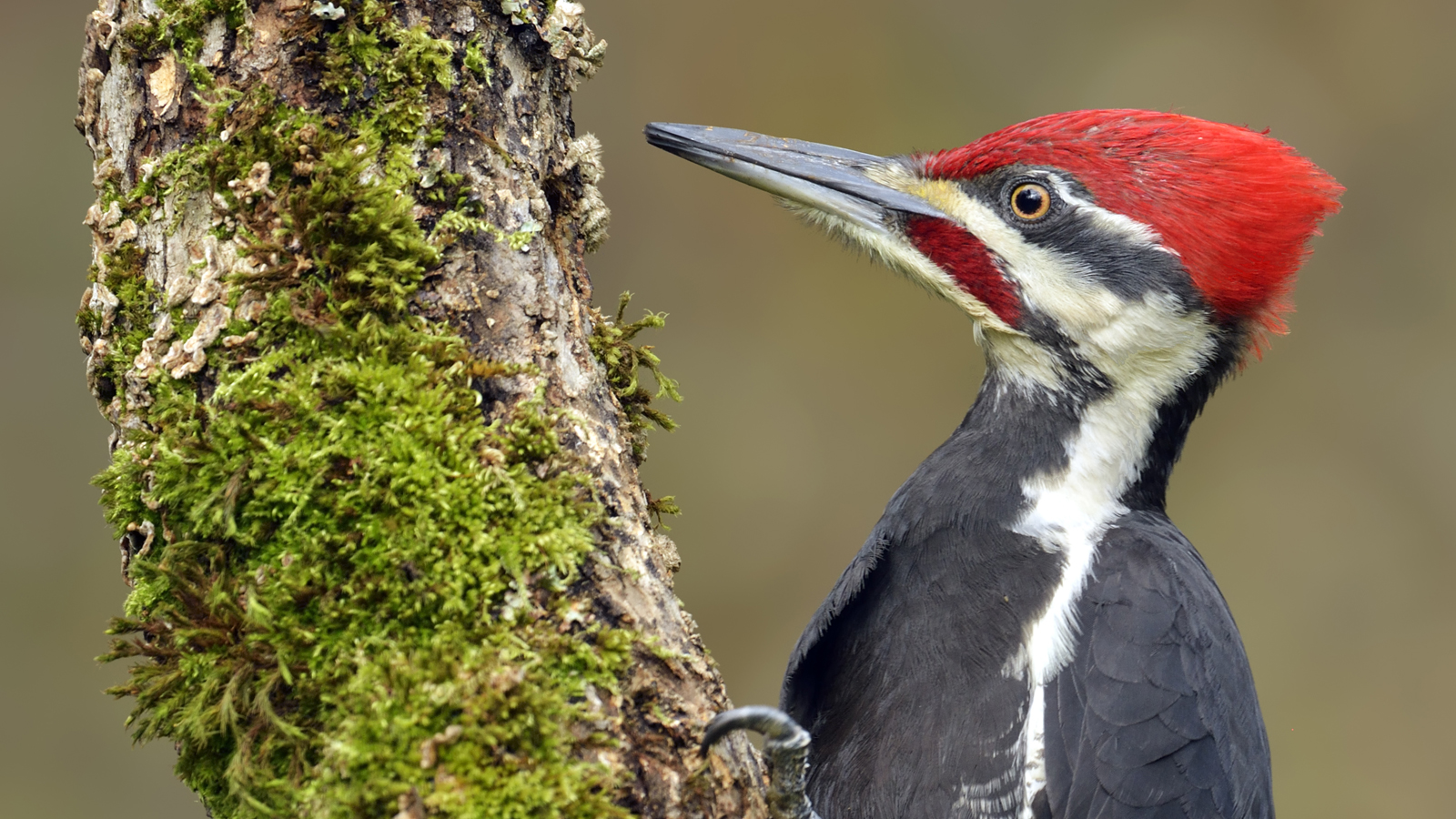Teaching Through Trade Books
Plants, Animals, and Earth Processes, Oh My! Changes to the Environment
The Earth changes over time. Some of the processes that change the Earth’s surface are natural, such as weathering and erosion; other changes can be made by plants and animals, including humans. Organisms have had to evolve over time to adapt to new environments. As these organisms evolved, they made still further changes to the Earth and its processes.
The activity for the young students asks them to consider how animals use different parts of their environment to meet their needs and how the environment is impacted by this use. Older students are asked to take the changes seen on Earth a step further by considering how water makes major changes to the Earth’s surface through the process of weathering and erosion.
This Month’s Trade Books

By Harriet Ziefert
Illustrated by Emily Bolam
ISBN: 978-1-609054281
Blue Apple
32 pages
Grades K–2
Synopsis
This playful book asks readers whether a variety of birds can use a hammer. Through colorful cartoons and illustrations, the reader is introduced to the idea that although animals may not use hammers, they do use their environment to meet specific needs.
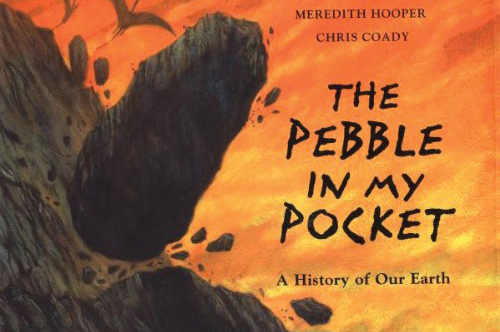
By Meredith Hooper
Illustrated by Chris Coady
ISBN: 978-1-84780-768-7
Frances Lincoln Children’s Books
40 pages
Grades 2–5
Synopsis
Through brilliant and detailed illustrations and descriptive text, this book considers the question, “Where do pebbles come from?” Beginning with the concept of how a rock is formed after a volcanic eruption, the story explains the processes of erosion, weathering, and transportation, the resultant pebble is picked up by a young person.
Grades K-2: Plants and Animals Can Change the World
Purpose
To investigate ways plants and animals (including humans) can change the environment to meet their needs.
- Does a Woodpecker Use a Hammer?
- chart paper
- Plants and Animals Can Change Their World Student Data Sheet (see NSTA Connection)
- short video clips (see Online Connections)
- When Humans Do … student data sheet (see NSTA Connection)
Engage
Plants and animals can change their environment while using it to meet their needs. Two examples provided in the Next Generation Science Standards are of squirrels digging to hide their food and tree roots breaking concrete. Share these two examples with students before beginning the story, and ask them to consider where they may have seen their environment changed by plants or animals. Read Does a Woodpecker Use a Hammer? to students and engage them by providing the following prompt: “When you listen to the story, try to think about ways that animals use different objects as tools, and how the animal moved, used, or changed things where they live to help them.” After reading the book, return to the following pages and discuss further to allow students to expand their thinking. Ask them:
- Seagulls dropping clams: Where do you think the seagulls picked up the clams from before dropping them onto rocks?
- Woodpecker using a hammer: When the woodpecker makes holes in trees to find food, the holes are left behind. What do you think the holes do to the tree?
- Chimpanzee using a stick: What do you think happens to the termite nest when the chimpanzee uses the stick to dig for ants?
- Person plowing the field: When the cows pull the plow in the field, what happens to the soil?
Summarize by asking students to brainstorm a list of different ways that animals or plants change where they live. Record their list on a piece of chart paper.
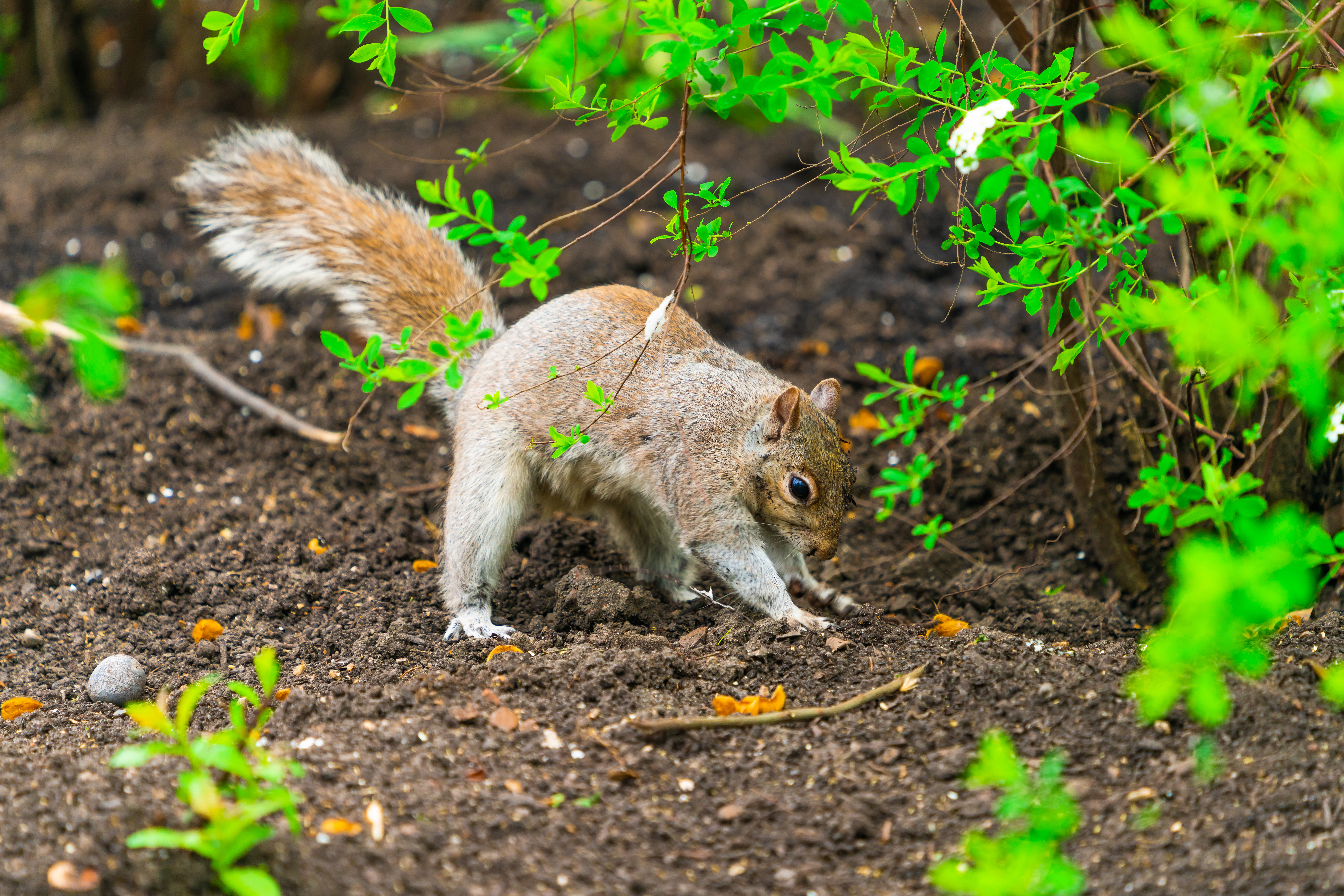
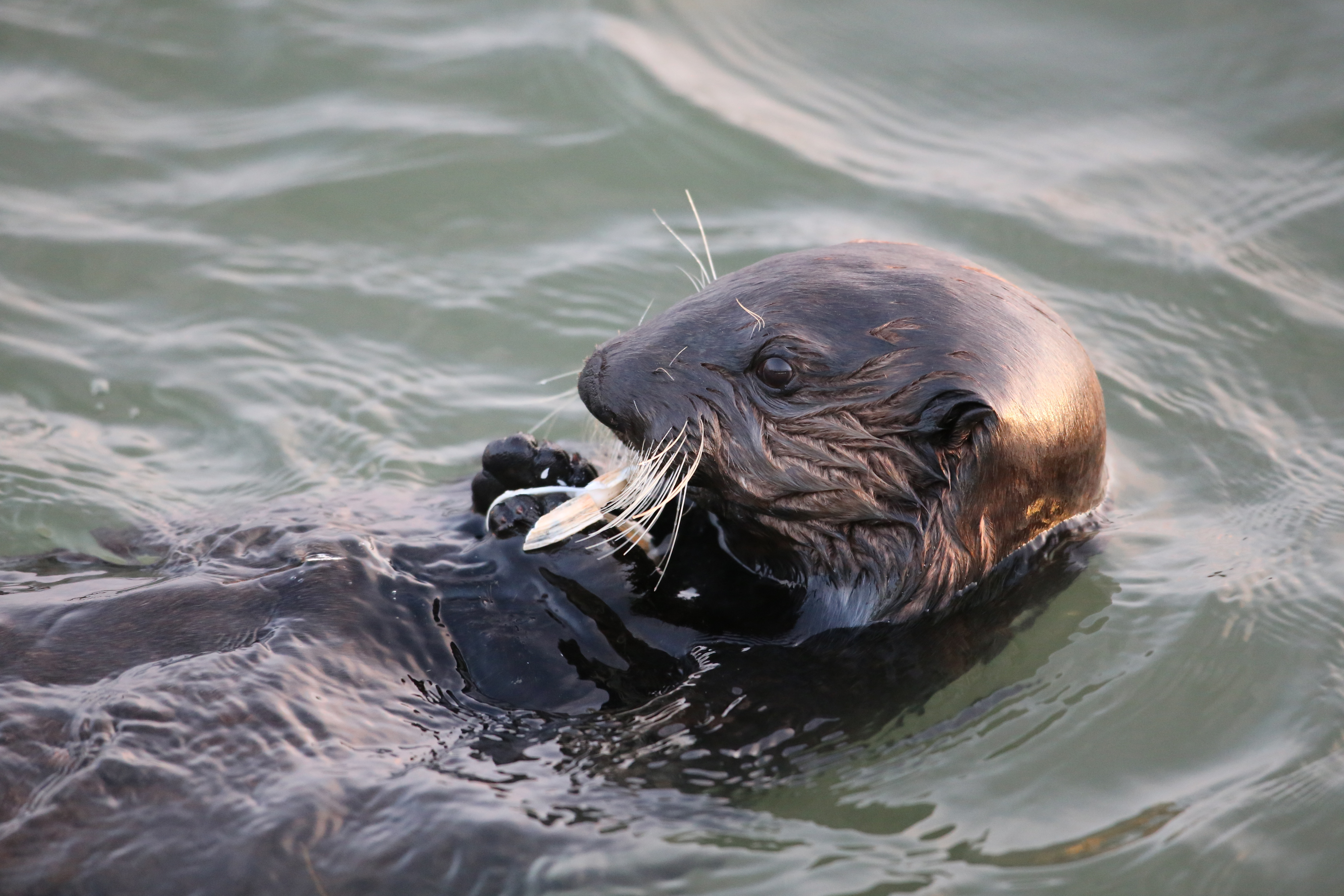
Explore
Using a series of short videos (see Internet Resources), students examine different ways that animals and plants can change their environment. The short videos provide visual evidence and some explanation as to how the environment is changed. Using stations set up around the room with the necessary technology (such as tablets or computers) or facilitating this as a whole-class activity, ask students to watch each short video and complete the information on the Plants and Animals Can Change Their World Student Data Sheet (see NSTA Connection). While students watch the videos, use the following questions to help focus them.
- “Squirrels Burying Nuts”: Describe what you see happening in the video. When a squirrel buries a nut, what does the squirrel do to the ground? How does the process of burying change the area? What do you think would happen if the squirrel doesn’t go back to get the nut?
- “Tree Root Asphalt Driveway Damage”: Describe the ground in the video. What do you think caused the rippling in the concrete? What do you think will happen to the ground as the tree gets bigger and the roots grow?
- “Giant Gopher Digging Hole”: What do you think is moving under the grass? How do you think the gopher got there? As the gopher digs a hole, where do you think the dirt is moved to? How do you think rain would affect the dirt around the hole? What do you think could happen if there are seeds on the plants that the gopher is pulling into the hole?
- “Tree Roots Win Their Battle Against Concrete”: What made all of the different patterns that the tree roots grew around? As the roots grew, why do you think they were able to create the same pattern as the bricks or concrete? What does this tell you about where the roots grow?
- “Fooled by Nature: Beaver Dams”: How does a beaver build a dam? Why does the moving of trees affect the local area? What happens to the river when the beaver builds a dam? As the river gets dammed up, what do you think happens to the surrounding area? How does this change the environment?
Explain
Ask students to form teams of three or four, or for younger students, facilitate this activity with the whole class. Ask students to use the reverse side of their student data sheet to complete one of the following prompts. They can list key words and then verbally explain them during a conference, write out responses, or sketch ideas. The prompts are:
- When tree roots grow underground, they can buckle the blacktop. When this happens, the tree roots change the environment by …
- Some tree roots will grow through the openings that are easiest to follow. When tree roots grow in between bricks or stones, they might change the environment by … S
- quirrels often bury nuts for the winter. What changes are made to the environment at the moment when the squirrel buries the nuts? What might happen later if the nut is left in the ground?
- The holes that groundhogs dig are used for their living space. The different ways that the land is changed when a groundhog burrows are …
- Beavers are animals that live in a lodge and build dams. Some of the ways that beavers change the environment around them are …
Throughout the discussion of the prompt answers, students should be able to demonstrate that they understand how the actions of plants or animals change their environment. They can return to the list of brainstormed ideas from the Engage phase and decide whether the examples on the list still meet the criteria for change.

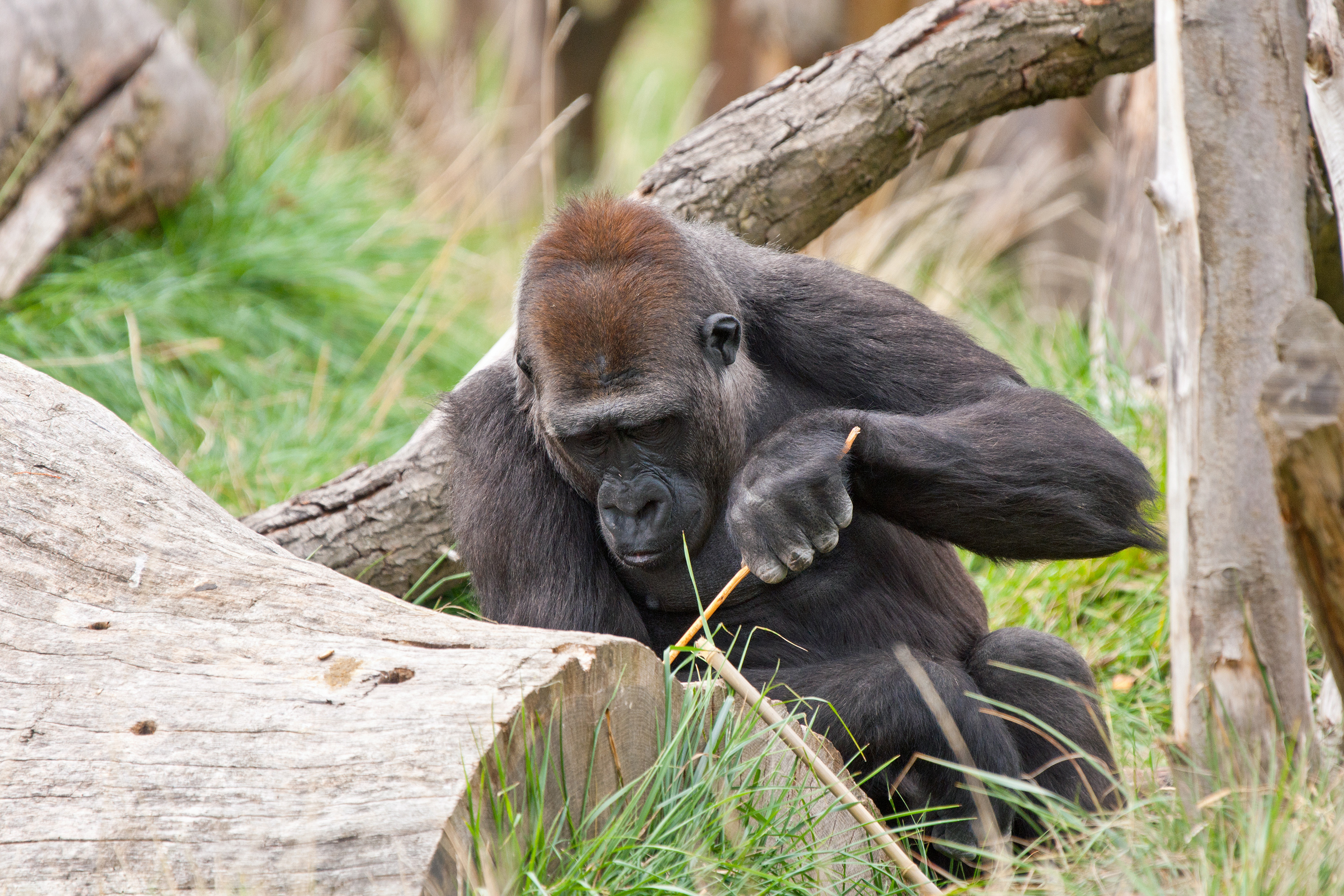
Elaborate
Students are next asked to consider ways that humans change their environment. Ask students to use the When Humans Do … student sheet in their groups or as a class to think about and provide an explanation for the following prompts:
- One way that humans change the environment around them is …
- A reason that humans might make this change is …
- When this change is made, the ways the land is changed or the environment is changed are …
- Select one of the ways you mentioned and think about it in more detail to answer the following question. (Teacher note: This question allows students to stretch their thinking, and it may be useful to tackle this question as a whole-class discussion first.) When this change is made (e.g., cutting down trees, paving a parking lot), what are some of the ways the area is impacted?
Evaluate
Through various media, students demonstrate their ability to brainstorm ways that plants and animals make changes to their environment. Students then connect their understanding to examples in the book. In the Explore and Explain phases, students gather information and connect it to environmental change, how that change impacts the environment, and then why the plant or animal is enacting change based on a need. Finally, students consider how humans make changes to the environment to meet a need.
Grades 3–5: Exploring Erosion
Purpose
To make observations on different factors that help shape the land and describe the effects of different methods of erosion on land.
- The Pebble in My Pocket
- round, smooth brown pebble
- summary table
- Weathering, Erosion, and Deposition slides with pictures (see Internet Resources) Erosion Station Investigation Cards (see NSTA Connection)
- plastic bin (at least 18 × 10 in.)
- several small rocks
- spray bottle
- small watering can
- soil or dirt
- tape measure or ruler
- ice cubes/blocks (different sizes)
- sand or small gravel
- shallow plastic tray
- modeling clay
- Erosion Station
Engage
Pull out a pebble from your pocket and show it to students. Ask them to listen to and answer the following, which is the opening line in the story: “The pebble in my pocket is round and smooth and brown. I found it on the ground. Where did you come from, pebble?” Let students brainstorm to generate initial ideas about the topic.
After students make initial connections and demonstrate their prior conceptions, read The Pebble in My Pocket to the class, stopping to discuss the following key points:
- p. 4: Describe the rocks that formed shortly after the Earth started to form. What happened to the land? (It began to tilt upward, fold, buckle, and crumple.)
- p. 5: Describe what happened to the rocks during the different seasons. (They were heated and expanded, and cooled and shrank; cracked; and were pushed apart by ice, forming cracks.)
- pp. 6–8: Describe what happened to the larger rocks over time as they tumbled down the mountain and moved across the land. (Edges were smoothed from sand blowing, big rocks were broken down into smaller rocks, and water moved rocks to different places while smoothing more edges.)
- pp. 10–11: Describe what happened to the pebble that came from the mountain rock when it landed on the shore after millions of years. (Sand filled in the spaces between it and many other pebbles and hardened into a new type of rock.)
- pp. 17–19: After the pebble was moved again, where did it settle this time and what happened to it? (On a sandbar that eventually gets buried.)
- pp. 20–21: Describe what happened to the pebble when glaciers covered the land and then receded. (The pebble was picked up and moved from one place and dropped in another place.)
Explore
After students listen to the story, show them pictures of land where there has been weathering and erosion (see Internet Resources) and ask them to consider how these pictures and the pebble might be related. As they consider this prompt, ask students to describe what they see in the pictures and what created the different images, which are of erosion, weathering, transportation, and deposition of soil. As students describe the images, record their thoughts on the board or in a table to summarize their thinking.
To help students make their own observations related to erosion, have them participate in two different activities or whole-class demonstrations. In small groups, provide students with the Erosion Station Investigation Cards (see NSTA Connection). A brief description of each station is shown on page 25.
As students participate in these two investigations, ask them to complete their Erosion Station Student Data Sheet (see NSTA Connection), which asks them to make observations and draw conclusions.

Explain
Ask students to use the information they obtained from the investigations and the story to discuss the following (where appropriate, introduce the correct terminology to the class as well): In your own words, describe what weathering and erosion are. At the water erosion station, what did each part of the model represent (i.e., soil, rocks, spray bottle, watering can)? How are these items similar to and different from the actual objects in nature? Using the measurements you took, describe what happened as more soil was eroded from the rocks. If this was in an actual environment, what do you think would happen after enough soil was eroded? What did you notice about the bottom of the hill? Describe how this sediment ended up there. At the glacier erosion station, what did each part of the model represent (i.e., ice cubes, sand/gravel, clay)? When only the ice was used against the clay, what did you observe? What happened when sand or gravel was placed beneath the ice cube? Why do you think the sand/gravel created lines or grooves in the clay? If the clay represents dirt or rock, what would have happened to the parts that were carved out? After the pan was tilted and some of the ice was allowed to melt, what did you observe? How do weathering and erosion help pebbles form?
Elaborate
Ask each pair of students to select a pebble from a pile and, using a similar approach to that of the book’s authors, have them write a description of their pebble and a story about how their pebble may have ended up in the area they live. Students should assume that all of the pebbles were located outside in a natural environment (i.e., they were not brought by humans from elsewhere). Ask students to write a short story that contains at least three steps in the life cycle of their pebble and includes terms such as weathering, erosion, transportation, and deposition. Students should also illustrate their story with pictures and diagrams to help describe the process. After conferencing with students about the stories, include them in a classroom collection.
Evaluate
Students demonstrate their initial understanding of potential ways that a pebble ended up in the teacher’s pocket, which should focus on how the pebble was formed. Through engaging in the story, students discuss different parts of the erosion, weathering, and transportation cycle. They then participate in two investigations that model these ideas. Throughout the investigations, students observe and collect information about the processes, and apply that knowledge by writing their own story about a pebble.
Online Connections
Fooled by Nature: Beaver Dams: www.opened.com/video/fooled-by-nature-beaverdams/42804
Giant Gopher Digging Hole: www.youtube.com/watch?v=_SwAVRgGR0s
Squirrels Burying Nuts: www.youtube.com/watch?v=5Mt-svDYE3A
Three Root Asphalt Driveway Damage: http://bit.ly/2vGDL8Y
Tree Roots Win Their Battle Against Concrete: www.youtube.com/watch?v=H2GaePVbni4
Weathering, Erosion, and Deposition Slides: http://bit.ly/2MJXtXX
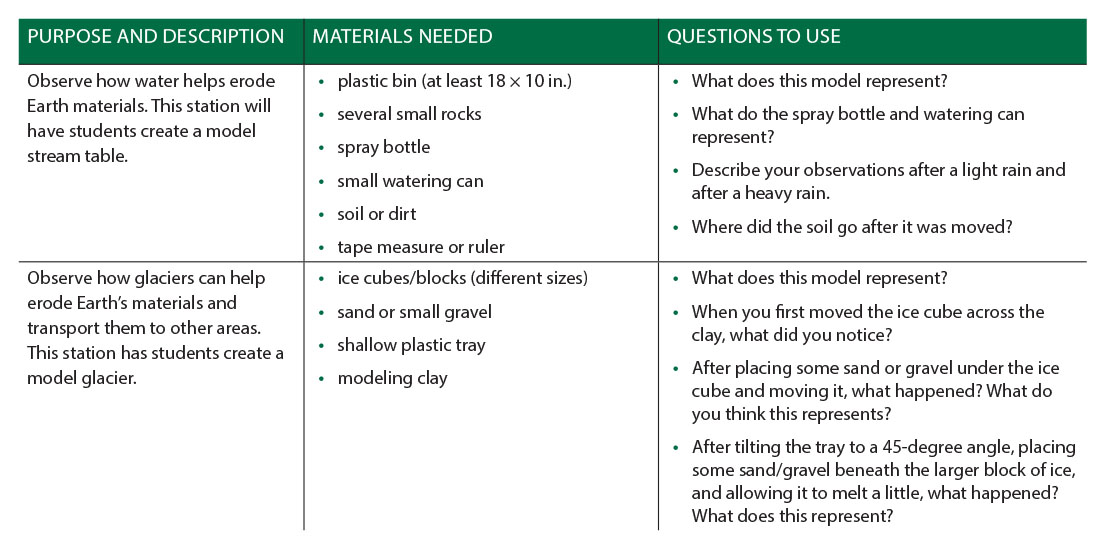
Instructional Materials Literacy Elementary



